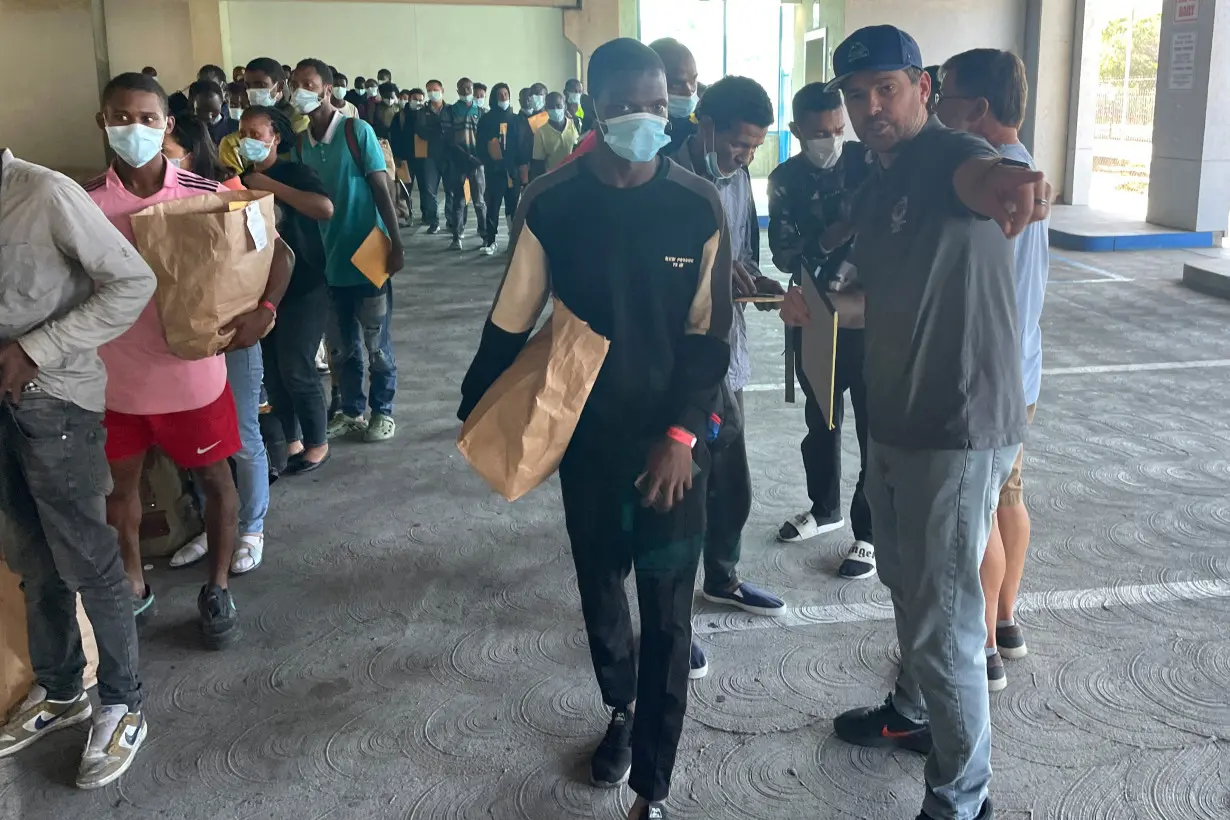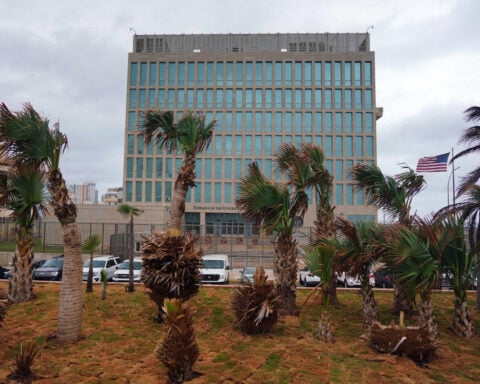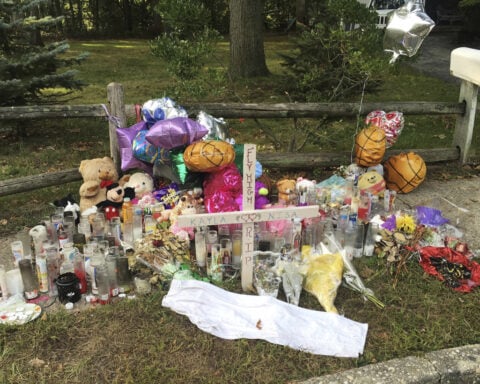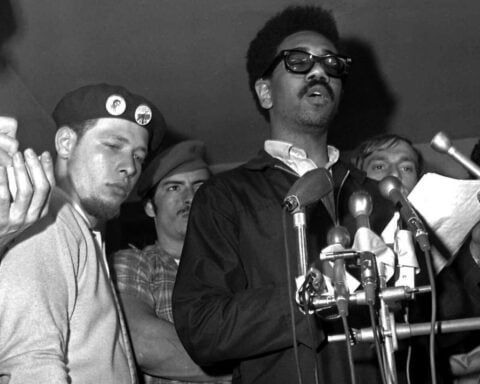By Daniel Trotta
OCEANSIDE, California (Reuters) - Overwhelmed by record numbers of asylum seekers from around the world, U.S. border officials have released thousands of migrants on streets in the San Diego area the past month, including about 1,400 in the beach town of Oceanside.
Twice a day, Customs and Border Protection vans or buses drop off asylum seekers at the transit center in Oceanside, a city of 172,000 about 50 miles (80 km) north of the border, say humanitarian organizations and volunteers who welcome the migrants and help them reach destinations elsewhere in the U.S.
They are among some 18,500 people released on the street in the San Diego area since Sept. 13, according to local government officials and legal and humanitarian organizations that have been in contact with CBP.
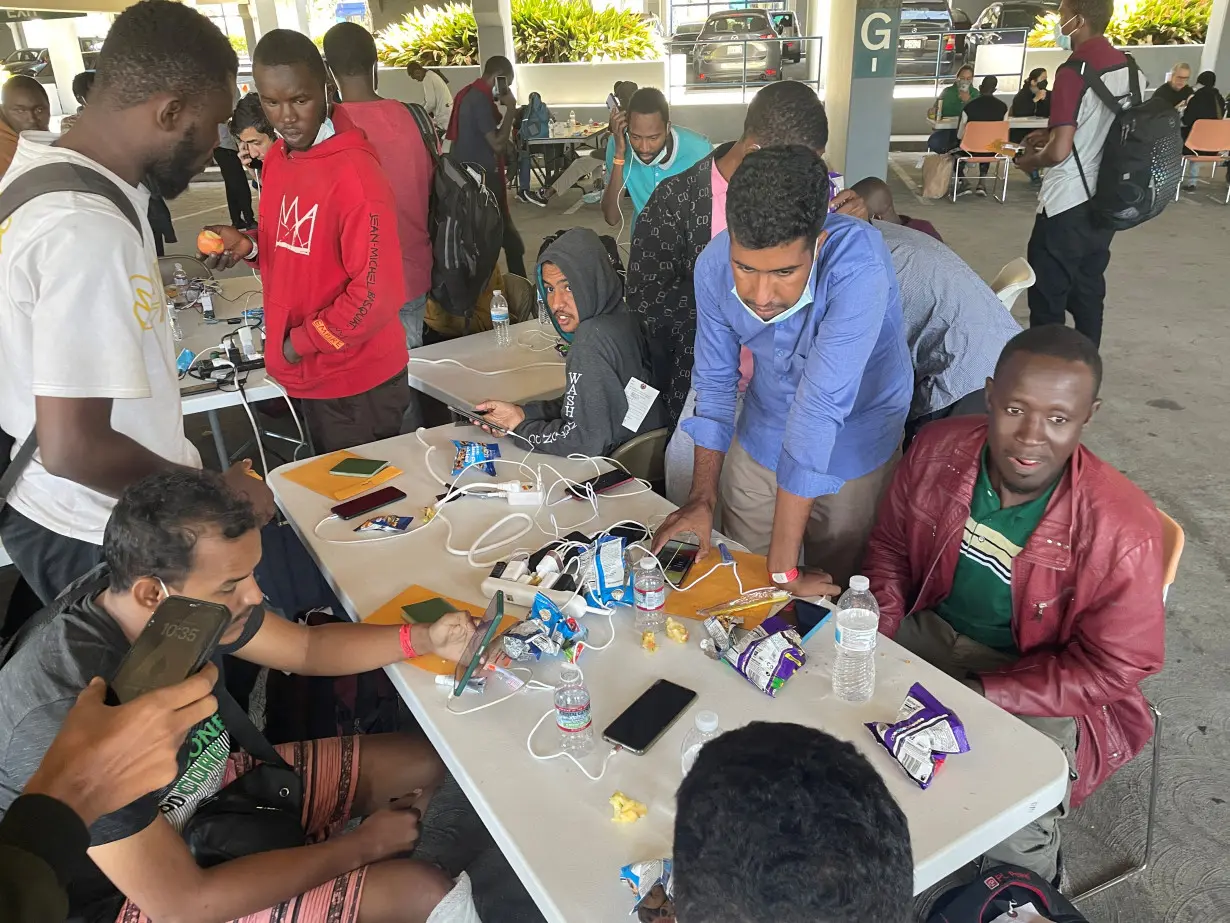
CBP said in a statement to Reuters that when non-governmental organizations that normally receive migrants are over capacity, the Border Patrol coordinates with local governments to identify "alternate safe locations where migrants can conveniently access transportation services or accommodations."
Most of the street releases take place in San Ysidro, the district of San Diego that borders the Mexican city of Tijuana, but they also take place in suburbs such as Oceanside and El Cajon, just east of San Diego.
The arrivals farther from the border show how communities in different parts of the United States can find themselves directly involved in the immigration crisis. Local leaders are clamoring for more federal funds to help absorb the migrants, while the political debate over immigration is certain to intensify ahead of presidential and congressional elections in November 2024.
"We don't know when this is going to stop. It could go on indefinitely," said Ryan Keim, Oceanside's deputy mayor. "California has an overwhelming amount of the homeless crisis. Now we're dealing with the burden of the migrant crisis. Do we displace our homeless? I'm not displacing our homeless. The federal government needs to address this."
U.S. Representative Mike Levin, a Democrat whose district includes Oceanside, said in an email to constituents the street releases were "deeply concerning" and that he was fighting for more funding to "provide critical relief for our district." He did not respond to an interview request from Reuters.
One recent morning, about 65 men, largely from the West African country of Guinea, arrived at the Oceanside transit center in the corner of a city parking structure. Each had a manila envelope containing their notice to appear in immigration court at locations around the country. On this day, many were bound for New York City or Columbus, Ohio.
Finally reaching the United States after long, arduous journeys, many of the migrants bypassed offerings of bottled water, fresh fruit and snacks and headed to tables of phone chargers so they could connect with family back home.
U.S. border officers picked up more than 204,000 migrants in the San Diego sector in the 11 months through August, up 27% from the same period of the previous year. Many of the new arrivals are seeking asylum status, which requires they prove they need protection from persecution in their home country. Asylum immigration courts are granting fewer than 15% of petitions.
'WE CAN'T HELP YOU'
When Iranian asylum seeker Hanieh Sadat Siadati arrived on Oct. 8, she said the American border officer dropped her at the Oceanside transit center with the words: "We can't help you, just go."
Siadati, 34, said she faced police repression in Iran for taking part in street protests in which she and other women removed their hijabs. She said she arrived scared and crying after a three-month journey that included a flight from Iran to Brazil and an overland expedition through nine more countries.
Once in Oceanside, volunteers "helped me and I thought, 'I'm saved. Thank God,'" said Siadati, who now volunteers at the center while awaiting her immigration court hearing.
Many migrants have no idea where they are when they arrive. Nonprofit groups that receive them help them book airline flights to unite with family and sponsors elsewhere in the United States.
Those who cannot find transportation immediately stay at a makeshift shelter at a nearby church or the nonprofit group Interfaith Community Services places them in a hotel.
Asylum seekers typically turn themselves in to U.S. officials at the U.S.-Mexican border and are assigned a notice to appear in immigration court. Sometimes border officials will try to coordinate releases with nonprofit agencies that can help them get to their destinations, but with capacity overflowing, they are being released farther afield and in greater numbers.
The releases are now happening multiple times a day, leaving an average of nearly 600 people a day on the streets in the San Diego area, according to Immigrant Defenders Law Center.
The Oceanside migrant service center is headed by Interfaith Community Services, which said it has been able to place 95% of the migrants arriving in the city with their sponsors and families. But it cannot handle any increase without new funding, said Fiona King, the group's director of development.
"It's not sustainable," King said.
(Reporting by Daniel Trotta; editing by Donna Bryson and Cynthia Osterman)

 Stock market today: Asian stocks mixed ahead of US inflation data
Stock market today: Asian stocks mixed ahead of US inflation data
 TikTok seeks to reassure U.S. employees ahead of Jan. 19 ban deadline
TikTok seeks to reassure U.S. employees ahead of Jan. 19 ban deadline
 US won't seek charges in unarmed Black motorist Ronald Greene's fatal 2019 arrest
US won't seek charges in unarmed Black motorist Ronald Greene's fatal 2019 arrest
 Euro zone households could increase consumption, ECB chief economist says
Euro zone households could increase consumption, ECB chief economist says
 Foreigners sold South Korean equities last month by most since early 2020
Foreigners sold South Korean equities last month by most since early 2020
 As fires ravage Los Angeles, Tiger Woods isn't sure what will happen with Riviera tournament
As fires ravage Los Angeles, Tiger Woods isn't sure what will happen with Riviera tournament
 Antetokounmpo gets 50th career triple-double as Bucks win 130-115 to end Kings' 7-game win streak
Antetokounmpo gets 50th career triple-double as Bucks win 130-115 to end Kings' 7-game win streak
 No 97 Laura Siegemund upsets Olympic champion Zheng Qinwen at the Australian Open
No 97 Laura Siegemund upsets Olympic champion Zheng Qinwen at the Australian Open
